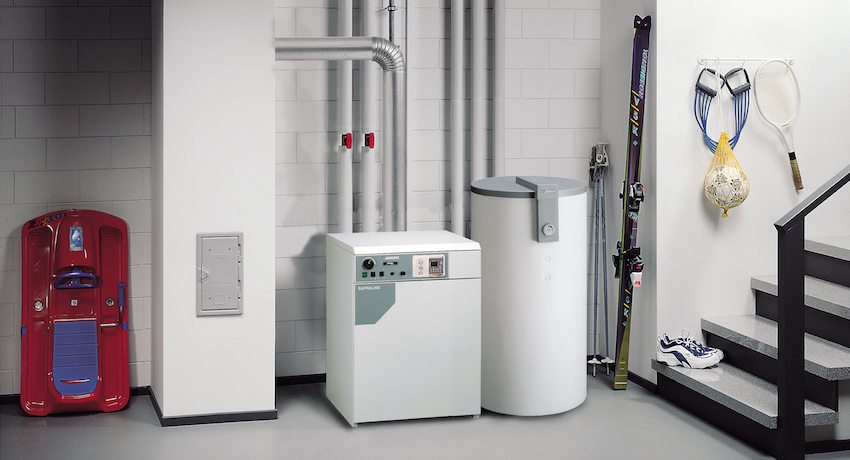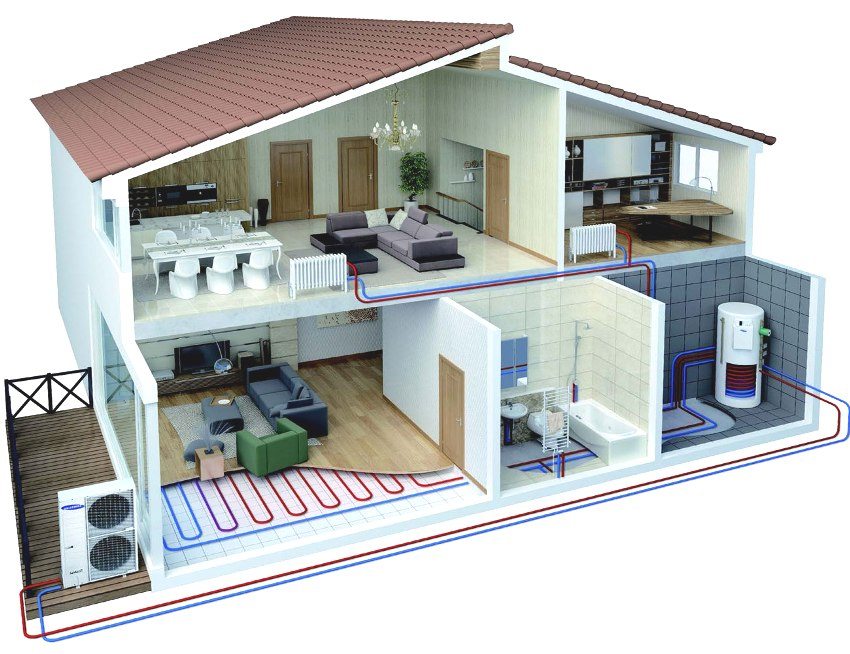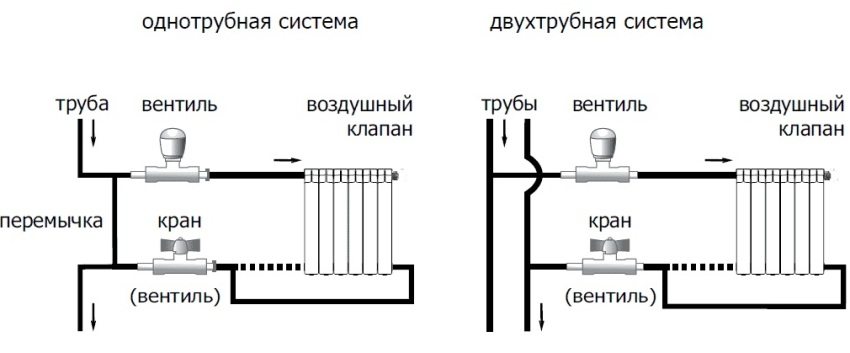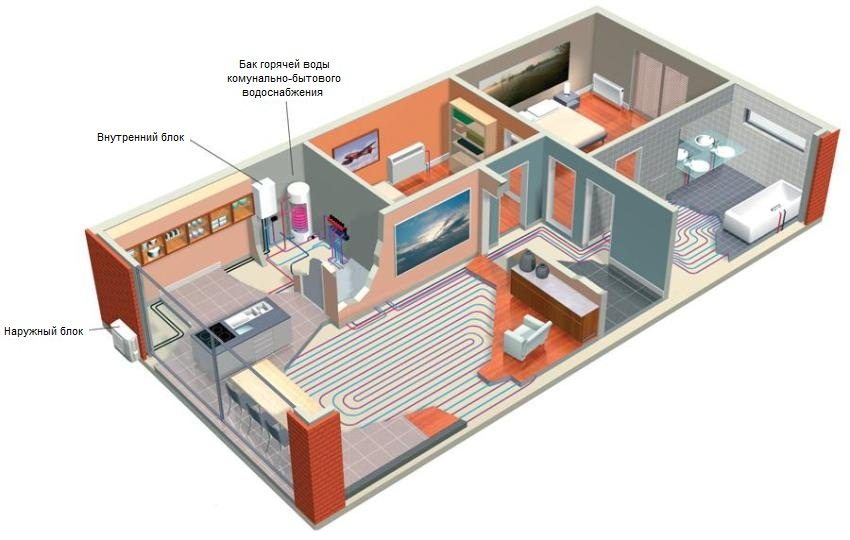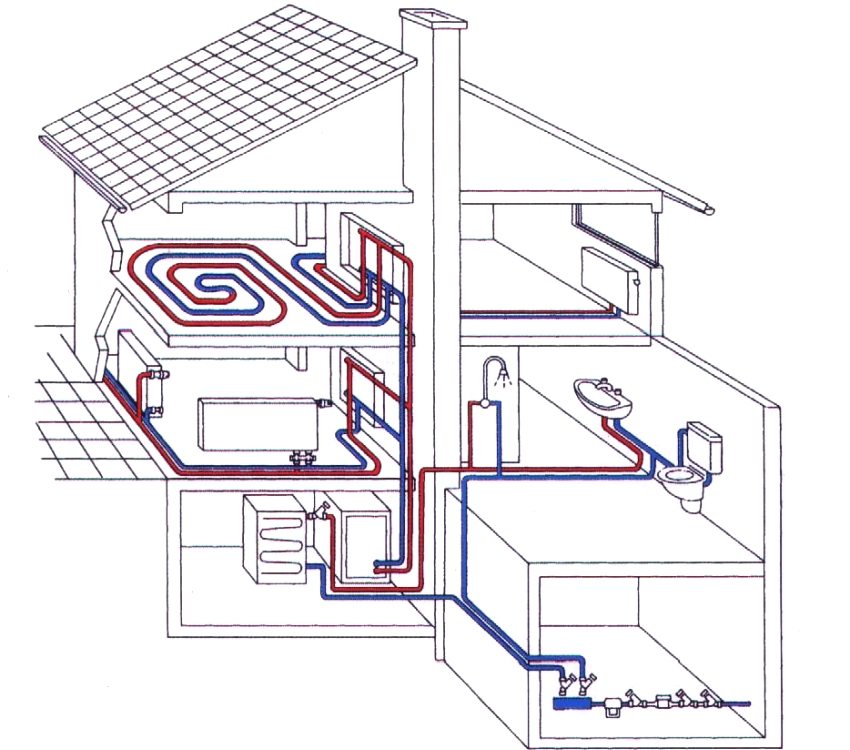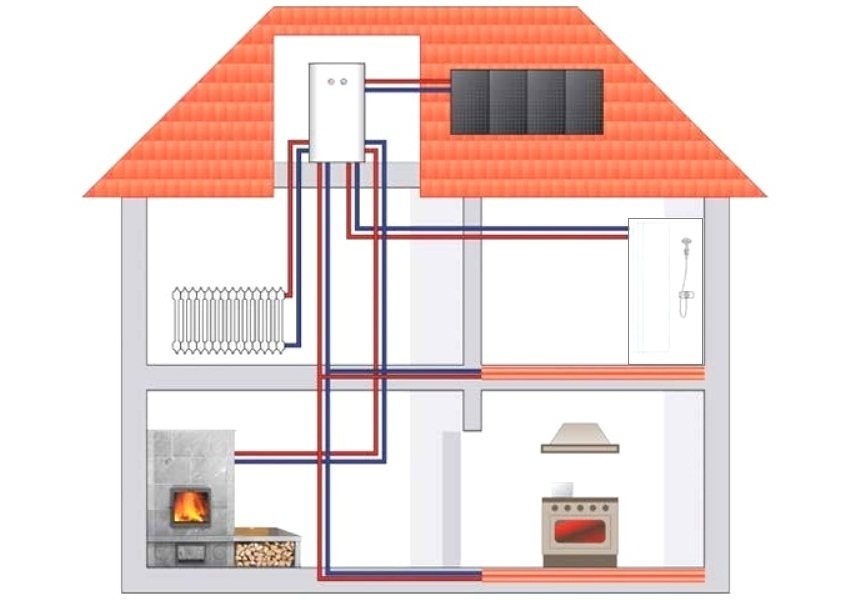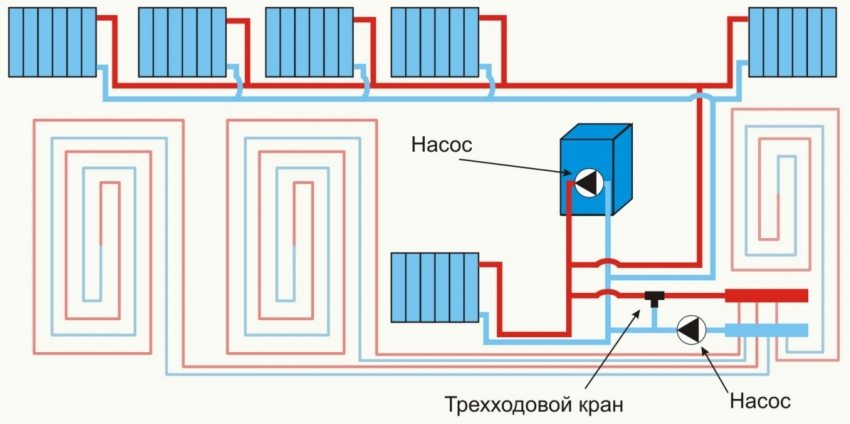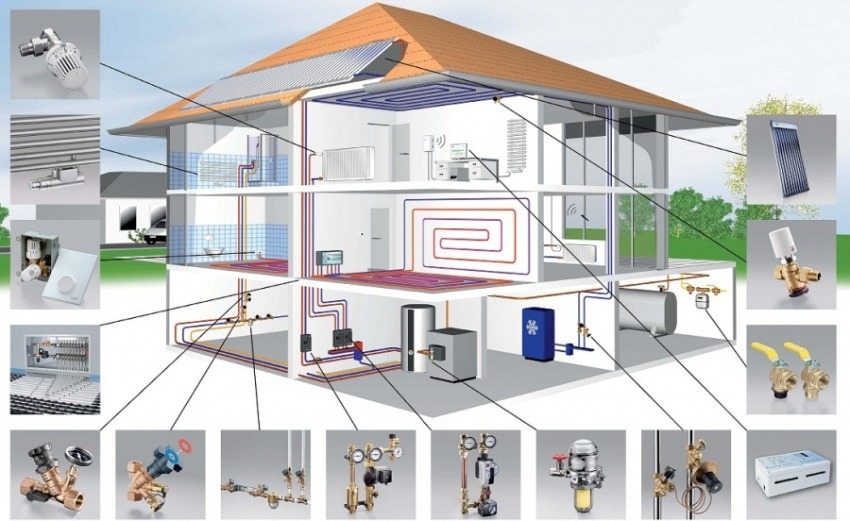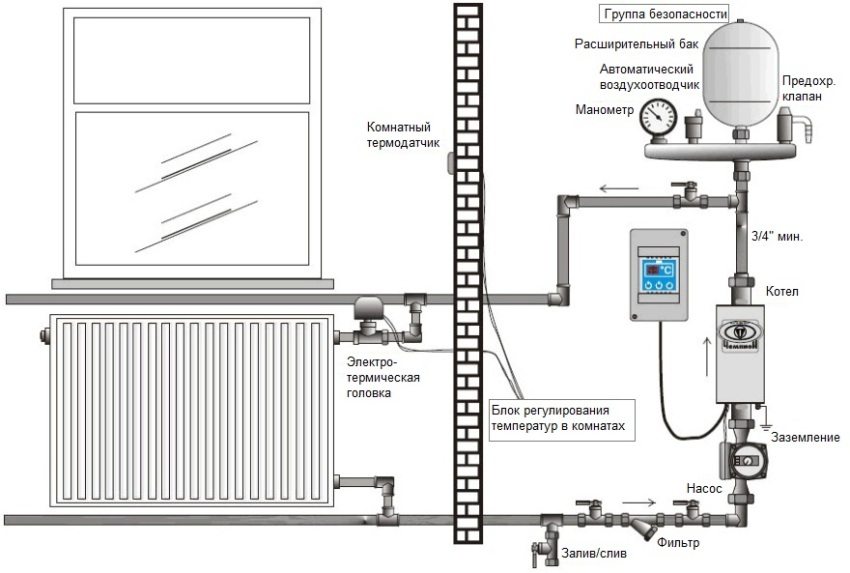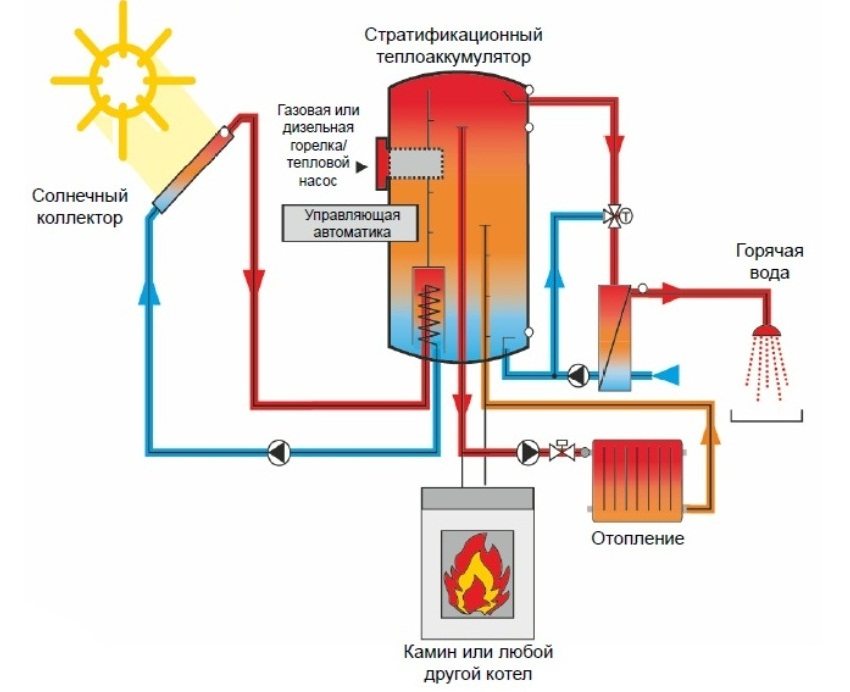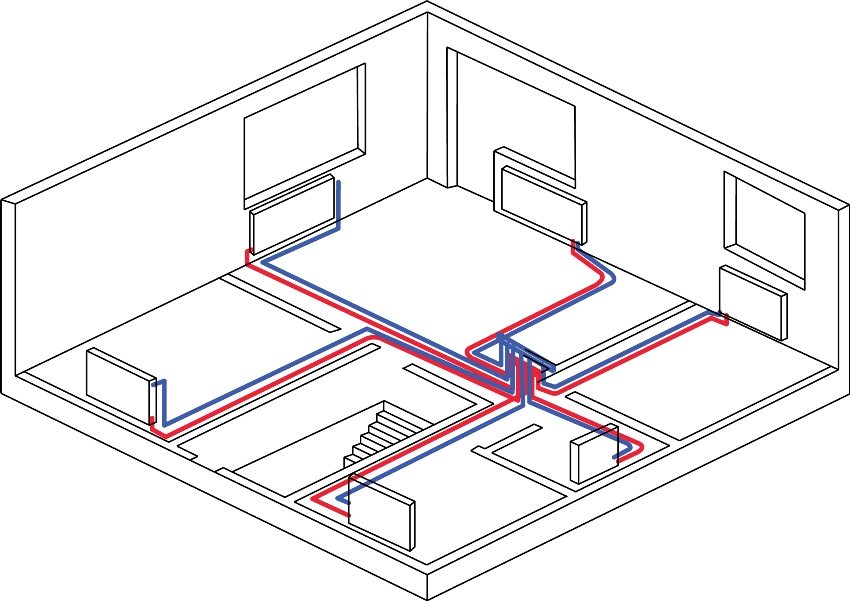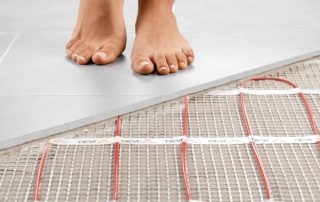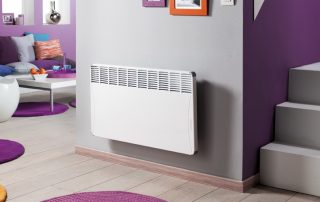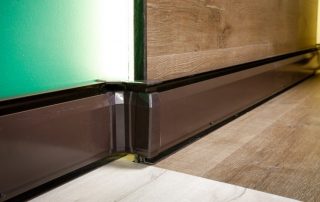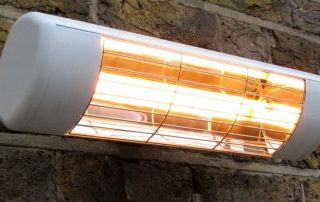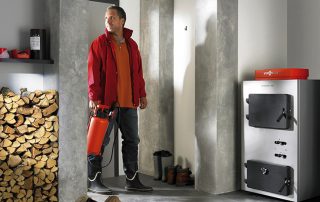Heating your home is not that difficult. Here's what you need to build a heating system for a private house with your own hands: a diagram of the installation of equipment and communications, the required amount of materials, knowledge and useful tips offered below.
Content [Hide]
How to arrange heating a private house with your own hands: schemes of various options
Already at the design stage, future owners must decide on choosing the type of heating system for a country housedesigned to warm the household with warmth for many years. It depends on many important circumstances. The main ones are: the availability of utilities connected to the construction site, the cost of a particular resource in a particular area. By the type of location of heat sources in the room, all options can be divided into:
- point: furnaces, air heaters, gas and electric heaters;
- distributed: liquid radiators connected by pipes.
If you have certain knowledge and skills, you can create any of the listed heating of a private house with your own hands. Diagrams with a description can be easily found on the network, and you must familiarize yourself with the main points of installation in advance.
Solid fuel heat sources
According to the energy source, all heating devices can be divided into: solid fuel, on liquid fuel, gas and electrical... TO solid fuel include classic wood-burning stoves made of metal or brick. In many places, they still function properly. Today, a large number of settlements do not have gas supply, so residents are forced to choose between the usual oven and an electric boiler. Firewood is still cheaper than electricity per m² of heated volume. The disadvantages of this option include the presence of garbage in the house from firewood, and the need to heat the stoves twice a day in winter.
Helpful advice! If it is impossible to arrange more modern heating in the house, the use of stoves can also be optimized. For this, it is recommended to purchase a long-burning stove and use it as an energy center for powering a liquid radiator heating system.
Spot gas and electrical appliances
Among other things, you can arrange a heating system for a private house with your own hands, the scheme of which only provides for the installation of several heating devices in different rooms. These are various electric or gas heaters. They can be of convection type or infrared... The former imply the direct spread of heat from the heated elements of devices by means of convection, and the latter emit infrared, electromagnetic waves invisible to the human eye, which can cause the acceleration of the movement of molecules in surrounding objects, thereby contributing to the release of heat by them. These appliances consume 30% less electricity.
The easiest way to create this type of heating for a private house with your own hands. Diagrams, videos and instructions for heating devices can be understood by everyone. Installation of devices of this type is not difficult. The device is put in the right place and connected to the network. Difficulty can arise only with the connection of a gas heater. However, this device is not very popular, since it does not have sufficient mobility and stands only at the point where the gas pipeline is connected. In addition, it contains open flames, which is unsafe for residential use.
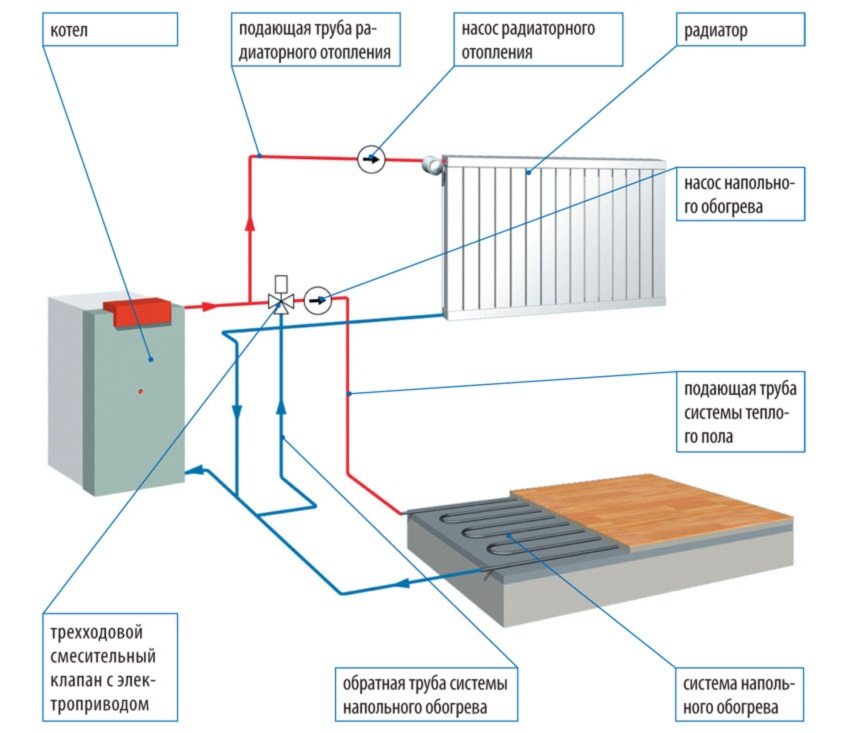
Heating circuit using gas boiler
Helpful advice! Heaters, unlike conventional electric heaters, supply hot air from heating elements using a fan, so the room heats up much faster. However, they, unfortunately, use a large amount of electricity. Such devices are recommended for use in summer cottages for rapid heating in winter with infrequent visits.
It is not customary to use point heat sources as the main heating of a private house. It is not difficult to repeat the scheme of this design with your own hands, but it does not meet all the requirements for heating houses in middle latitudes.
Complete fluid systems
This is the most popular way to provide heat to various premises, including residential buildings. If in city apartments the liquid heat carrier is heated in central boiler rooms and is pumped over all apartments by pumps, then in a private house it must be heated independently. This can be done using any energy: electrical or generated by the combustion of any fuel. Often it doesn't matter what kind of fuel is burning. It can be wood, dry briquettes, gas or fuel oil. Each of them has its own stoves and boilers, some of which function normally on different types of fuel.
Of course, you can build such a heating system for a private house with your own hands. The installation scheme is always approximately the same:
- oven or a boiler installed in a special room or in a bathroom. Boilers can be electric or gas... Some modern models have two circuits and an automatic control system. Gas options are supplied pipe for the exit of combustion products from them. They are available with natural draft or forced exhaust. All boilers differ in power, on which the heating ability of a particular area depends. Inside all boilers there are so-called grate bars or circuits of thin tubes through which a heat carrier fluid circulates. It can be water, antifreeze or industrial oil. Each circuit has an input and output;
- a system of radiators connected to each other using pipes in series or in parallel. It is connected to the boiler circuit.Since the liquid is subject to thermal expansion to a large extent, an expansion tank is always present in the system, which can be a separate element or be part of the boiler;
- when heating large areas or houses with two or more floors, a centrifugal pump is installed in the system, which forces the liquid to circulate intensively through pipes and radiators, more efficiently carrying out heat exchange with the surrounding air.
Knowing the basic principles, you can start creating a heating system for a private house with your own hands. Its scheme was outlined above, and the installation procedure can be found below.
Do-it-yourself instructions for organizing a private house heating system: device diagram
Before proceeding with the actual installation, it is necessary to calculate the need for materials. This can be done only if you know the required boiler power and the rate of distribution of kilocalories from radiators. To calculate the number of sections in the radiators of a private house, you need to know that 150 watts of power are needed per 1 m². Knowing that the average power of a standard battery section is 15W, you can count the number of sections for any room. The power of the boiler itself must exceed by 10% that required for heating the entire house. For example, for the normal operation of a boiler for heating a house with an area of 100 m², it must have a power of more than 15 kW.

Examples of one-pipe heating systems with top distribution and natural circulation of the heat carrier
We will continue the instructions for constructing heating a private house with our own hands. Diagrams, videos and nuances of various options for this process can be read here. In general terms, you can follow the following algorithm:
- The place for installing the boiler should be a separate room, especially if it is gas.
- Install in the right places battery with the required number of sections.
- We connect them together with one or two pipes, depending on the chosen wiring option. At the same time, we monitor the level relative to the horizon.
- We install an expansion tank in the return pipe, and a centrifugal pump in the supply if they are not in the boiler structure itself.
- Screw the incoming and outgoing pipes to the corresponding boiler nozzles.
- We fill the system with water through an expander or directly from the water supply system, if such a possibility is provided for in the design, and we start the boiler.
Helpful advice! There should be drain valves on the top of the batteries to bleed air. Otherwise, it will not be possible to fill the system completely.
There are many types of heating organization in a private house and methods of its installation. Which one to choose, each owner decides for himself in accordance with preferences and economic considerations.
